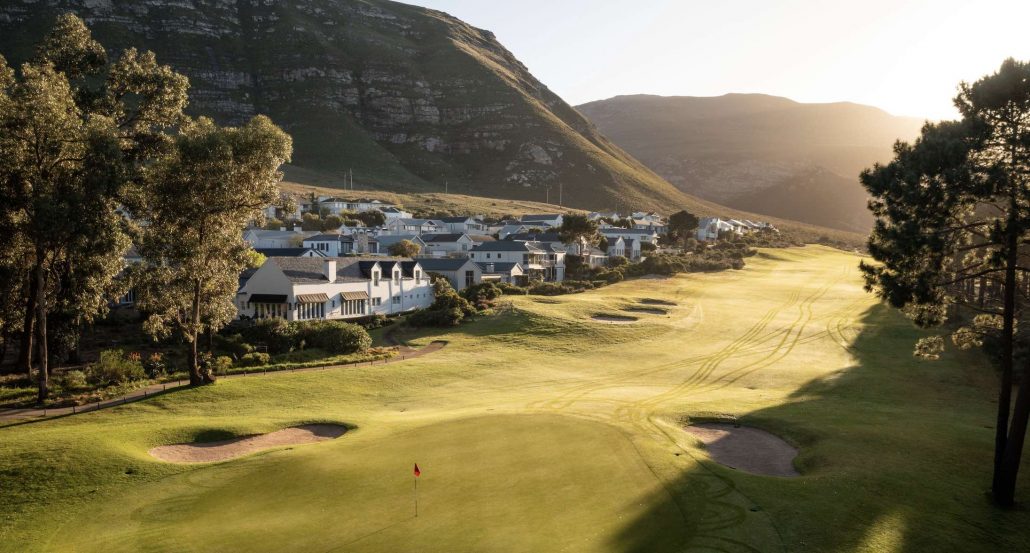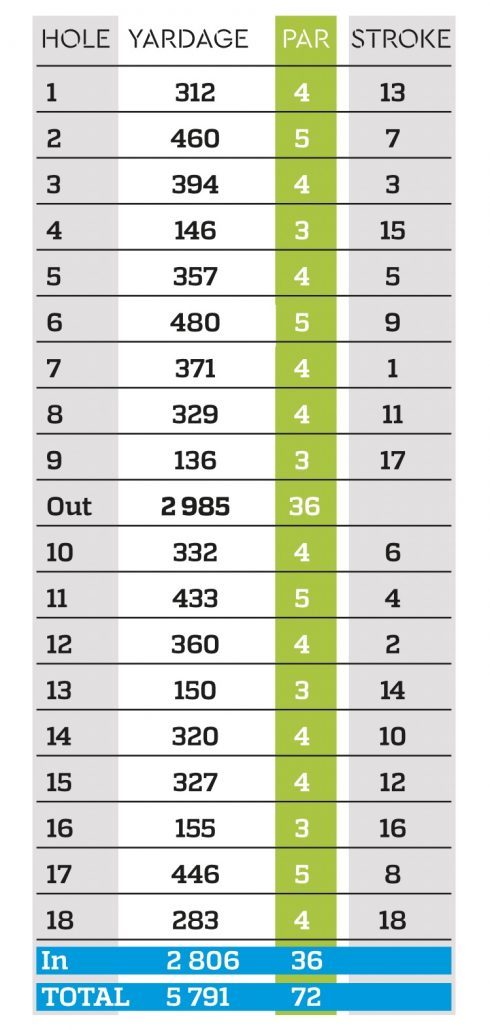Whales, wine, mountains and the ocean. Hermanus has it all, including 27 glorious golf holes to choose from, writes MARK SAMPSON.
Situated towards the back of the town, the Hermanus Golf Club course is framed by Fernkloof Nature Reserve at the base of the Kleinrivier Mountains on the north-western side. On the opposite side is part of the housing estate with occasional views of the blue ocean from some of the higher-lying holes.
The course originated in the early 1900s when the local community decided the area needed a golf course. The buy-in fee for members was five shillings, which initiated the design of the original course.
It was only due to the municipality, which owned the land, buying into the project that allowed for its completion. In the early 1970s, however, the course had part of the layout identified as land for the growing township in the area. Fortunately, this never went ahead and allowed the course to retain the original layout.
Plans for a large-scale housing estate were put in place in 1999 but never got off the ground due to the land still belonging to the municipality. In 2007, the club’s centenary year, the land was secured from the municipality and this set in motion what has now become an incredibly attractive service offering for the golfing community and with it, a very busy business hub adding to the attraction of Hermanus at large.
In 2007, with the land secured, Matkovich and Hayes – the golf course architecture company – was brought in to design another nine holes and do some retouching to six of the original East course holes.
Due to the age of the course, you can expect mature large trees throughout the layout dominated by pines and blue gums. The course boasts a perfect balance between several very tight driving holes and more open forgiving fairways indicative of its diverse location and picturesque setting. It meanders through a variety of mini ecosystems including mature forests, mountain fynbos and wetlands, which will delight avid birders.
The 27-hole configuration allows for three variations of 18 holes, with the East course, holes 1 to 18, being the preferred tournament layout. From the club tees the course is a mere 5,791m, although it can be extended to 6,066m from the championship tees.
Taking into account a number of tight tree-lined fairways, subtle bunkering and the all-too-common coastal wind, it can be a formidable challenge. Large, well-conditioned, receptive greens can be expected, many of which are raised with steep drop-offs. Due to the lay of the sloping surrounding area, several holes have graduals slopes – both up and down – making club selection a challenge.
Intriguingly, the longest par three is only 155m and the par fives average out at just under 455m, the shortest of which is the 11th hole at only 433m. Believe it or not, it is the stroke four on the course and for good reason (see signature hole below).
The front nine starts with an easy 312m par four, followed by a 460m tree-lined strong par five. A tricky stroke seven, especially with any wind around, which requires a good tee shot down the right side to have any chance of going for the green in two. Tall mature pines protect both sides of the fairway so any errant shot will be penalised severely. If making the green in two is not possible, a good lay-up short of the fairway bunker right is suggested. The raised green slides from back to front and is shallow, so choosing the correct club can be tricky. If the flag is back right, the prudent option may be the middle of the green.
The first par three of the nine comes at the 4th, playing to a distance of 146m, so relatively easy. The challenge comes with the exposed two-tiered green and the wind swirling between the trees. Sloping from back to front, and featuring two bunkers left and a bunker right, the surface is well protected.
Hermanus has a number of visually enticing holes and the 8th is a strong contender for signature hole. It’s a relatively short par four of 329m but riddled with danger from tee to green. The entire left side is out of bounds due to the driving range while the right side is protected by a water hazard. Greenside you will find a semi-island green with water right and bunkers right front and middle left. Even with a short-iron in hand it can make for an elusive target. The nine finishes with the second par three of the day and it’s rather welcoming at 136m.
The halfway house is one of the best in the country with a thoughtful balance between hearty baked goods, fresh fruits, salad and tasty homemade pies. The authentic coffee must be a contender for the best golf course coffee on offer.
The large one-storey clubhouse is truly unique in design, offering a variety of separated areas catering for all needs, most likely the main reason for the never-ending hive of activity throughout. A large restaurant area offers meals as well as a warm tea option in the afternoon. The main bar and lounge area can be found on the other side with the actual bar and kitchen cocooned in the middle. Even the smokers have a special section with a bar area.
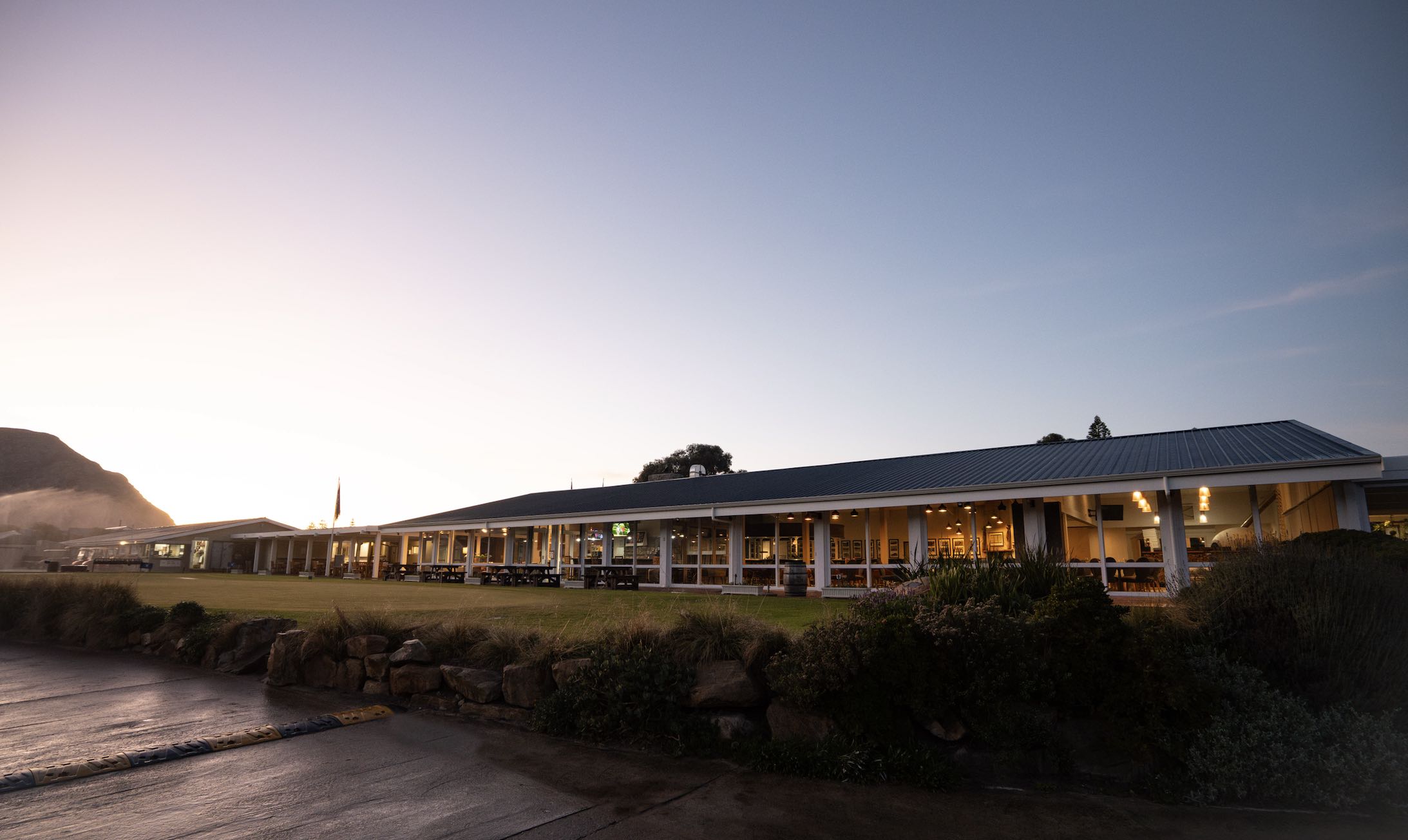
The entire one side of the clubhouse overflows onto the course with magnificent sunset views of the surrounding mountains. The cherry on top is the outside bar canteen area offering another option for those looking for a boost of vitamin D.
The course also offers a genuine 20-bay driving range off mats and grass as well a chipping and bunker area. A large practice putting area and separate chipping area can be found on either side of the clubhouse.
The back nine, similarly to the front, starts with a straightforward par four of 332m, with a good drive allowing for a genuine birdie opportunity.
The 11th is the knee-jerker on the course as well as the signature hole (see below). Holes 13 and 14 drop dramatically in elevation with the 13th tee offering views of the ocean. At 150m, the 13th plays into the short quartet of par threes. That said, it generally plays with a crosswind and has a large bunker left and a water hazard right, so no real bail out. The drop in elevation can also make club selection confusing.
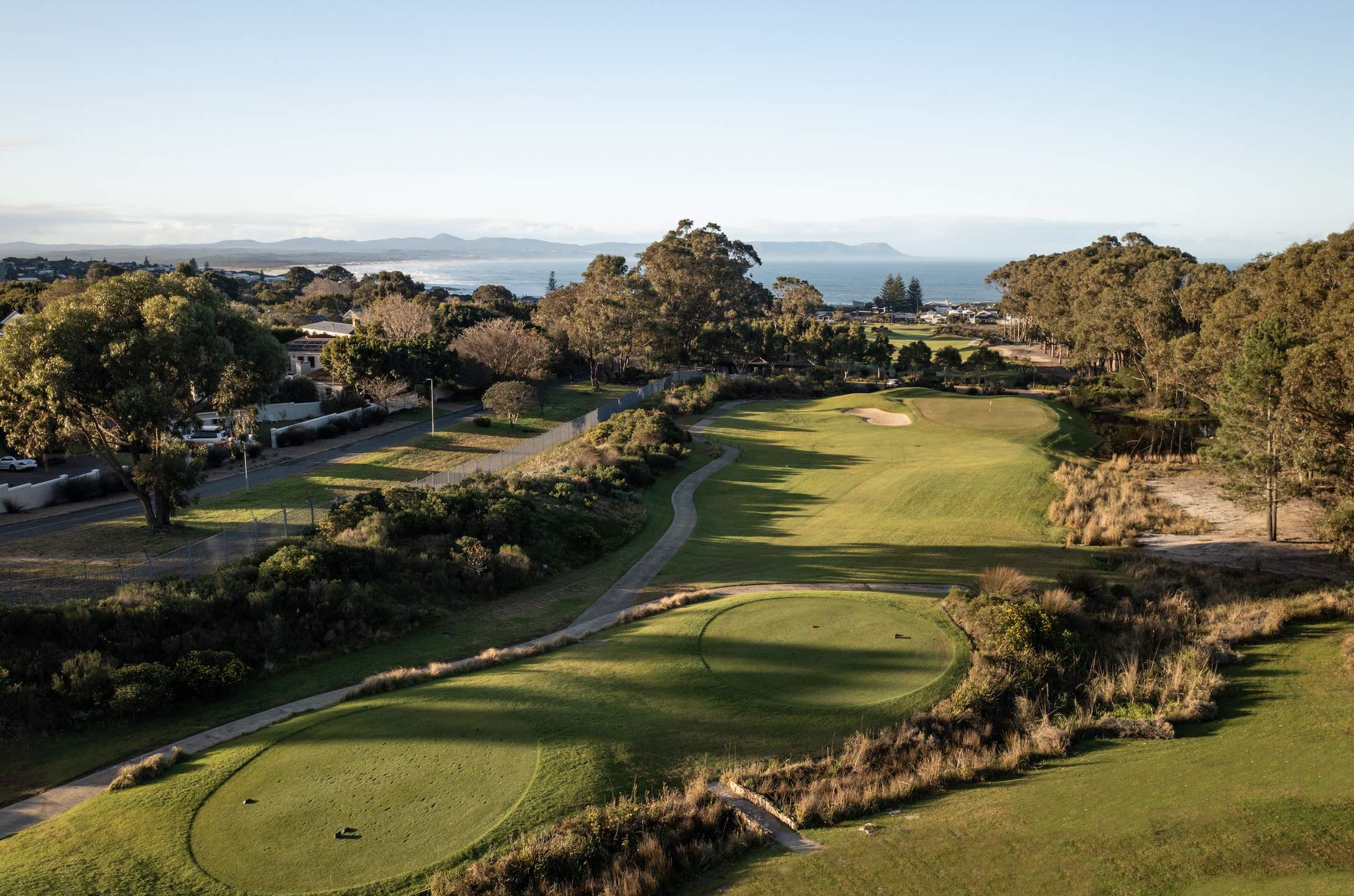
The closing holes of 17 and 18 on the East course are genuine birdie opportunities. The 17th is a 446m par five sliding from right to left through the trees. A good drive, making sure the fairway bunkers right are avoided, and it’s go time for a birdie. Three bunkers short, protect the left side of the green. It is not a massive green so anywhere on the surface will allow for a realistic two-putt.
The finish hole is a par four of only 283m. It’s a sneaky risk-and-reward hole, with the longer hitters having a good opportunity for birdie. The green is, however, well protected with a dam right and a collection of bunkers left and back. Fairway bunkers also protect the left side of the fairway, making up an impressive tally of 10 bunkers in total. A beautiful closing hole to finish the round; be sure to take in the mountain views before heading to the 19th.
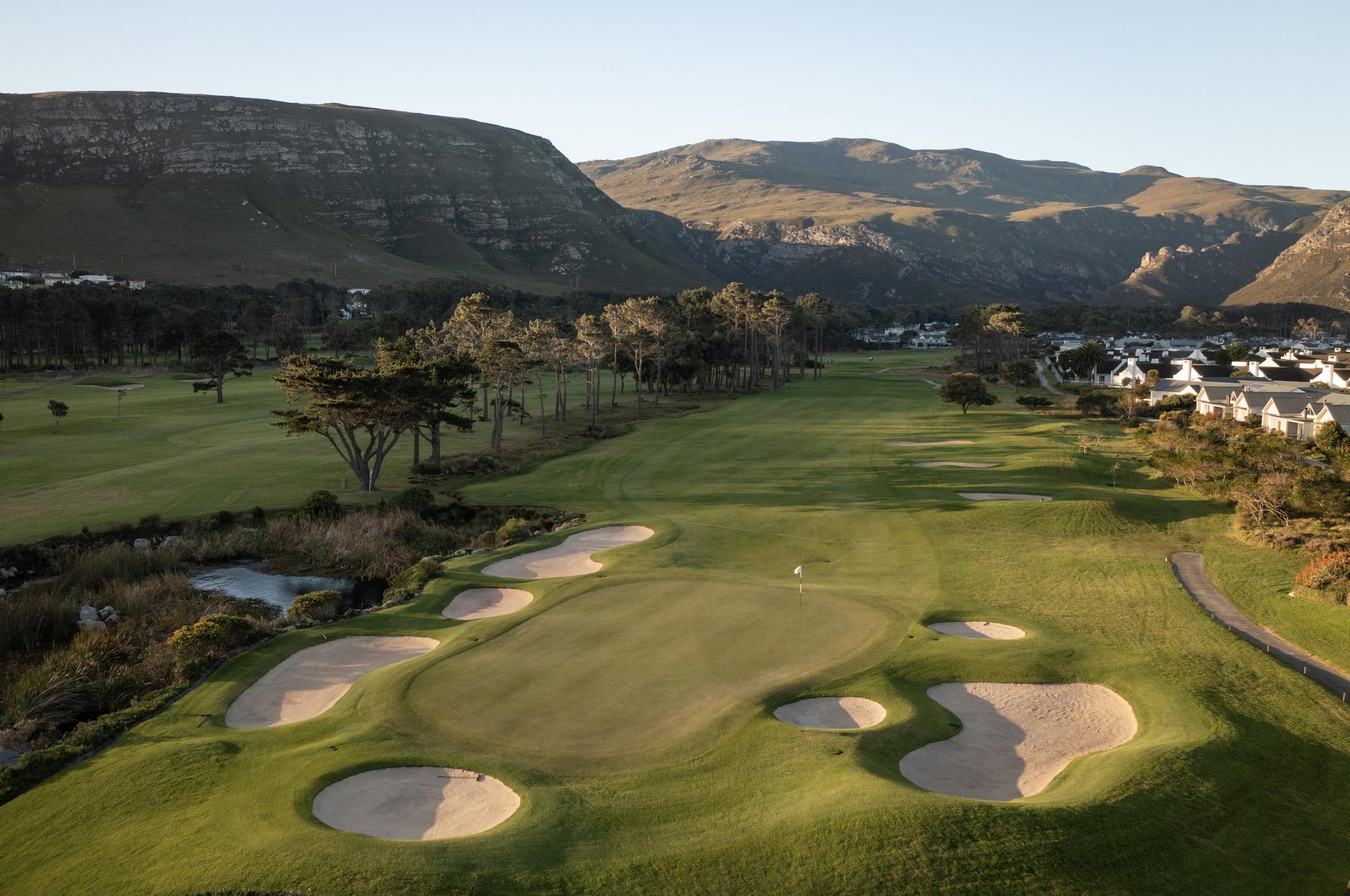
The East course is rated No 39 in the country and fifth in the Western Cape. Undoubtably, its popularity shines through each year by having some of the highest numbers of rounds coming through the doors, obviously partly due to it having an extra nine.
The combination of 27 impeccably maintained holes, the location of Hermanus with all its offerings and a hands-on management team and friendly staff make for a golfing experience not to be forgotten.
SIGNATURE HOLE
11th hole, par five, 433m
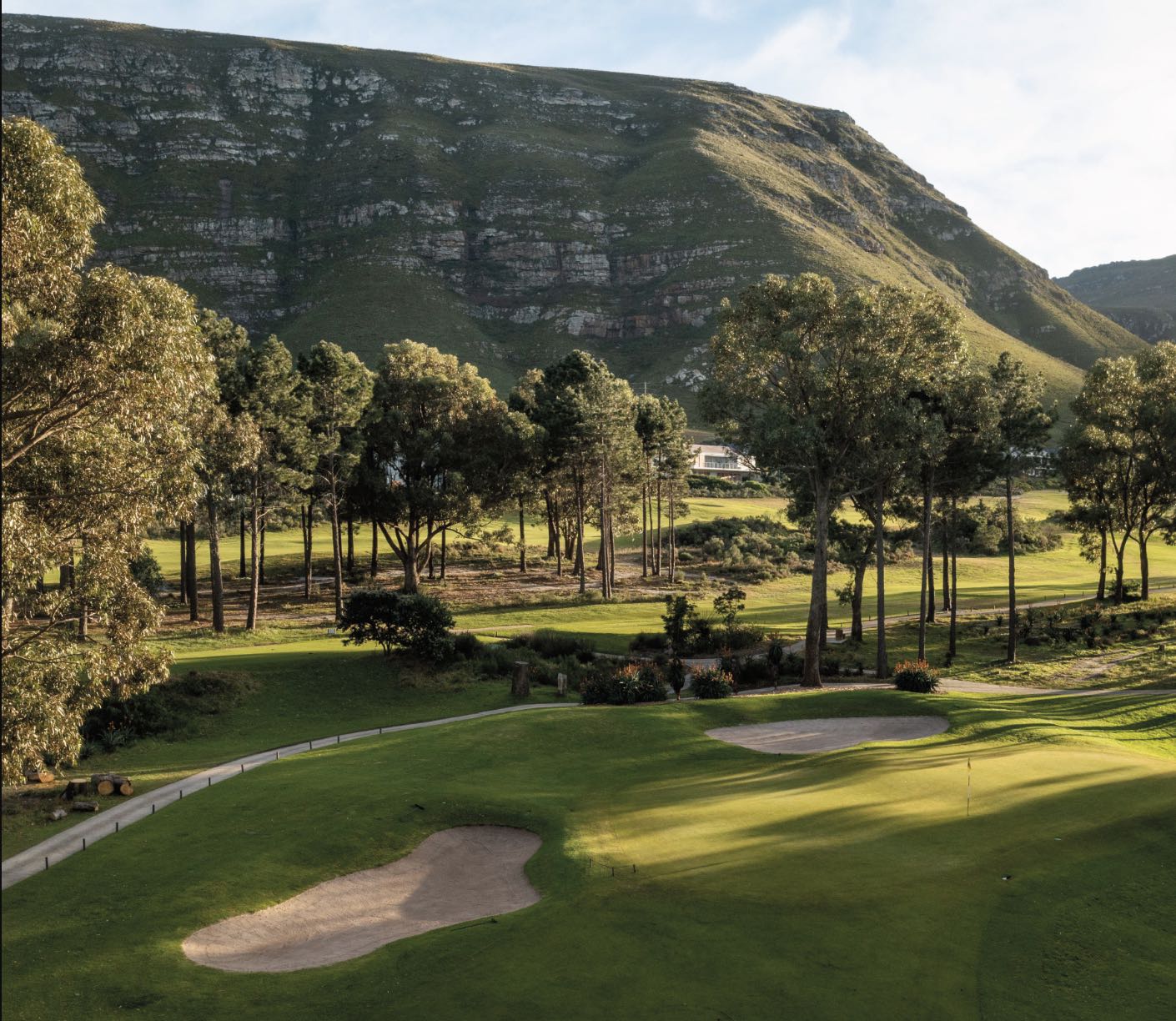
The signature hole at Hermanus East Course is all about avoiding the trees.
You miss the trees, you should be reaching the green in three as it is a short par five of only 433m. The stroke has been changed in the last five years from eight to four, once again reiterating the need to be accurate and find the fairway as it’s not the length that makes it difficult.
The hole slides uphill from right to left and from the tee box it has a 10 out of 10 intimidation factor. The chute of pines enclosing the fairway is narrow, even with a driving iron in hand, and it takes a well-struck shot to avoid trouble.
The brave, or foolhardy, can go with the driver but even the most accurate will consistently struggle to find the short stuff on this particular hole. A well-struck driving iron will leave the average golfer having to lay up on this right-to-left fairway as it makes its way up to the green. Going for it in two would be foolish; leave yourself a good distance from the green for your favourite wedge. The longer hitters who take driver off the tee will be left with anything from fairway wood to long-iron to the green.
The elevated multi-tiered green is no pushover with a deep drop-off right and two large bunkers on its left flank. As it lies obliquely to the incoming approach, a fade – for right-handers – would be needed with a long-iron in order not to go over the back.
The severe drop-off on the right also makes for a tricky up-and-down so finding the surface should be the priority. If the bunker is found you are then playing back to the narrow green with the massive drop-off on the opposite side and multiple tiers to navigate.
If the flag is at the back of the green don’t be overly aggressive with your approach as coming back will leave a nasty downhill chip with the green sloping away from you.
This hole can dish up easy birdies; however, play within your means so as not to be caught out by its tree-lined fairway and swirling winds resulting in a big number.
You will be grateful to have this one behind you.
GREENFEES
Scholar
R80/9 holes, R135/18 holes
Guests
R395/9, R690/18
Golf cart
R275/9, R460/18
GETTING THERE
From Cape Town, travel through the town of Hermanus as if driving to Stanford. Turn left into Brug Street and immediately left again into Golf Road. Follow the road to the clubhouse.
ROAD DISTANCES
Cape Town: 118km
Gqeberha: 672km
Johannesburg: 1,411km
Pretoria: 1,468km
Durban: 1,647km
ADDRESS
Golf Road, Hermanus, 7200
CONTACT DETAILS
The Pro Shop: 028 125 0110
Email: [email protected]
Web: www.hgc.co.za
– This article first appeared in the September 2023 issue of Compleat Golfer magazine.


